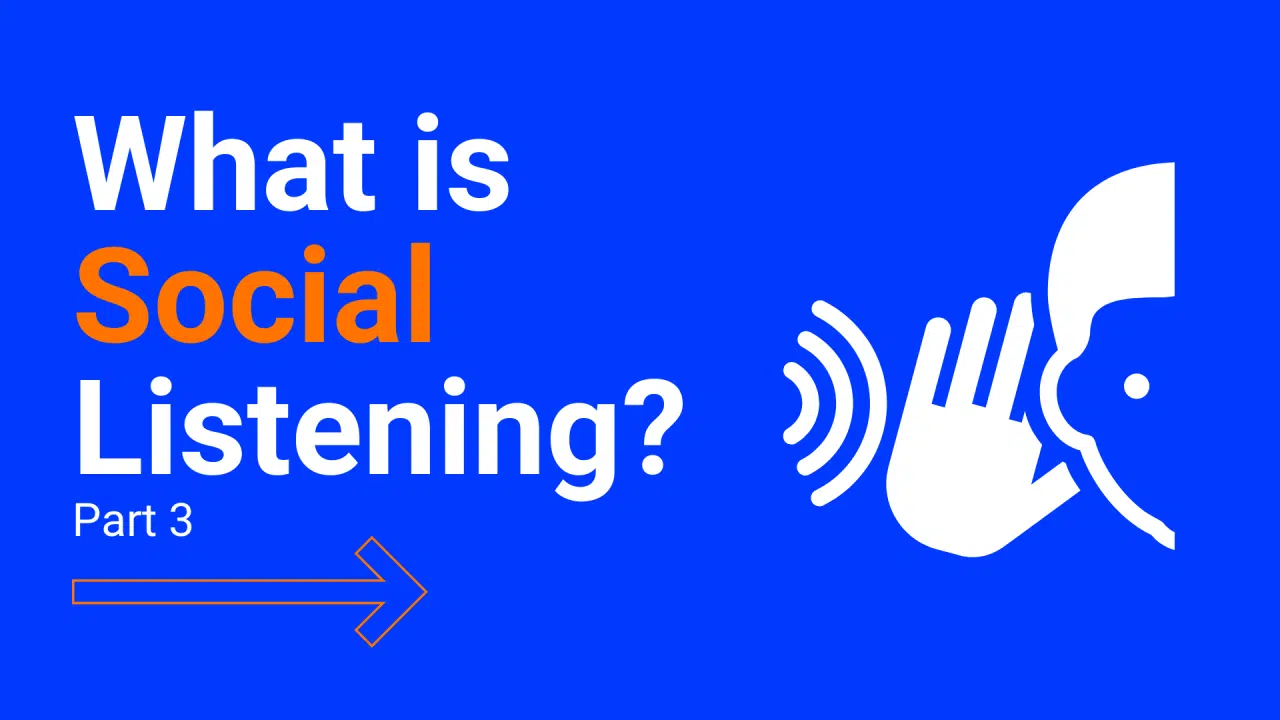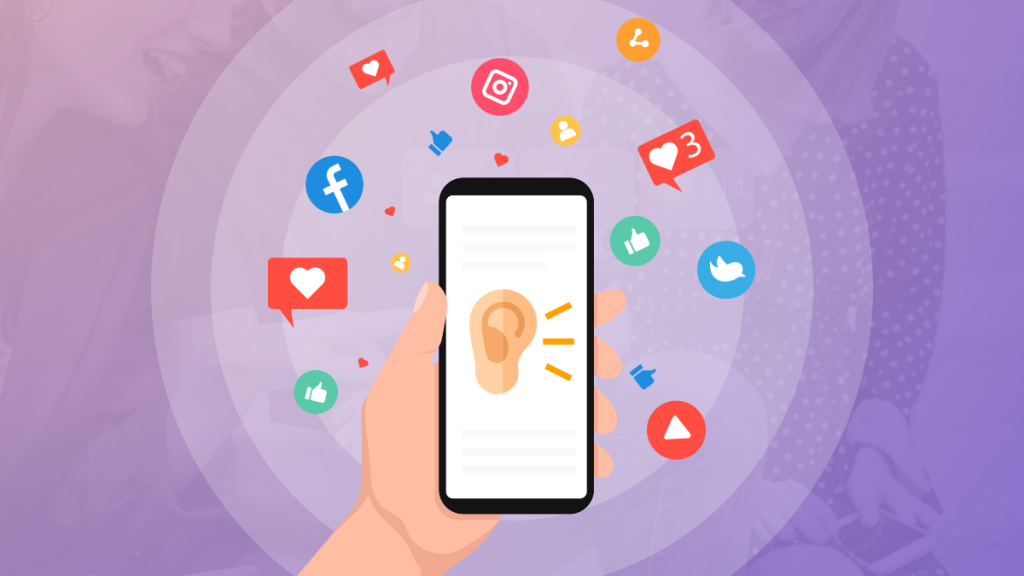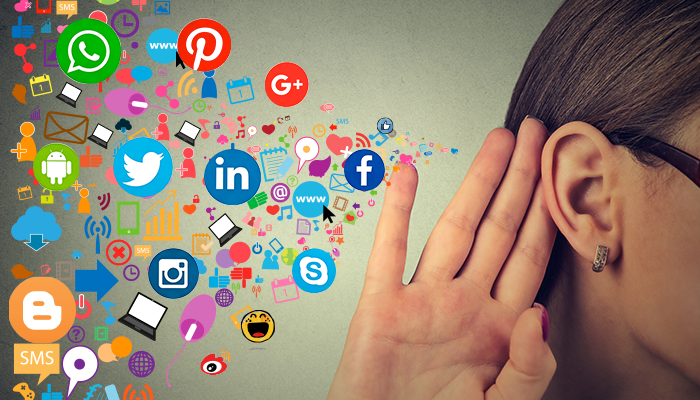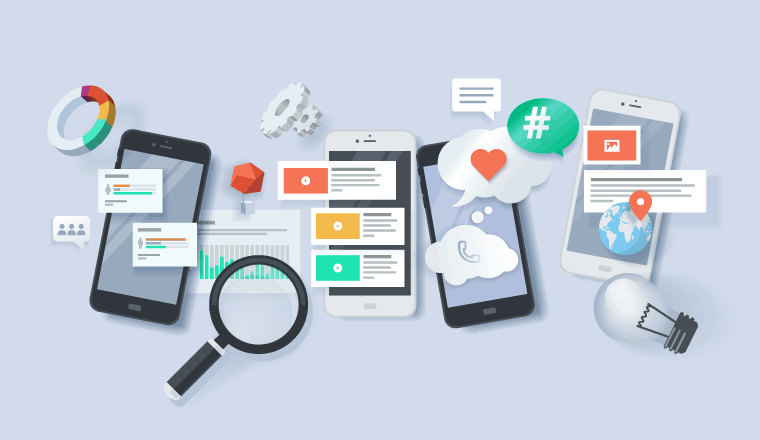
Two weeks ago, in Your Weekly Dopamine Dose, we discussed the benefits of social listening. This week, we’ll dive into common tools and how to implement them in your business.
6 Common Social Listening Technology Tools
Social listening tools are to use the data created on social media platforms to provide brands with data-rich insights.
Social listening tools can work as watchdogs for brands. These tools automatically search and report on social media.

Business doesn’t have to assign employees to manually search to analyze social media posts for similar information.
This information is valuable and businesses can understand what kind of social media content is chosen by customers helps to build better strategies.
Social listening tools automatically apply algorithms to process the data. Some of the tools rely on the human analyst to process the data.
1. Hootsuite – It’s a powerful social media scheduling platform which gives you the ability to perform large-scale social listening. This tool focus is the scheduling and distribution of content in 35 social networks.
Hootsuite’s Insights organizes all of your social listening data into an easy-to-use dashboard that tracks sentiment, demographics and more.
You can measure the performance of all social media channels. The free version of Hootsuite allows you to monitor limited social network streams.
The premiums plans give you access to listen to conversations happening beyond social media on blogs, forums, and new websites.
2. Google Alerts – It’s the search engine’s way out for social listening. Google Alerts is the discovery of a content change and notification service which gather information.
It can be used for monitoring online channels to identify new content, industry trends, and conversations about your brand about your competitors.
It sends automatic email notifications once a result like an article or blog posts match the users’ search terms.
3. TweetDeck – It’s a free tool and launched by Twitter. TweetDeck is a social media dashboard application for managing multiple features in one single screen.
TweetDeck allows you to create side-by-side streams of Twitter mentions, schedule tweets, monitor users, hashtags, search terms, lists, and discussions.
4. Mention.com – Mention is a very popular free social media monitoring platform with social listening features.
It’s an online tool that tracks conversational blogs, microblogs, bookmarking websites, images, videos, and questions. It helps to measure conversations around your business and competitors.
It pulls all activity around your brand across Facebook, Instagram, Pinterest, Twitter, and YouTube into a single dashboard. Social mention aggregates data about your brand name from 100 social media pages.
5. TweetReach – It’s a statistics tool for Twitter analytics which helps users measure the reach of users and tweets.
TweetReach can be beneficial for identifying current relevant themes and influential opinion leaders for your marketing activities.
6. Awario – It’s a powerful and multipurpose social media monitoring tool. It monitors all the key social networks across the web in more than 50 languages.
Awario suits both for working with individual mentions and a large amount of collecting and analyzing social media data.
This approach is essential to sustain social media strategy. You can see individual mentions from social networks and websites in your mention feed.
You can select the filter to show only certain types of mentions such as negative mentions, specific time period mentions, or any language, etc.
6 Ways Social Listening Technology Works
You have to define a set of keywords or topics while using social listening tools. These words can include any brand name, product name or phrases of your marketing campaigns.
It could be any influencer name, spokesperson, or describe any industry or type of product or services to get more information.

Social listening tools will start to search for posts which contain specified topics on social media platforms such as Twitter, Facebook, and Instagram.
Social listening tools will extract information in a report from the posts which includes name, location, date etc and content from social media platforms.
1. Define Your Objective – Entering a social listening project with clearly defined objectives is important. It can be helpful to establish a solid theory when you’re building a listening query.
It’ll help to process the data into an actual takeaway and allows seeing social media as a source of actionable data Insights.
2. Beyond Handle – You need to think beyond your handle on Twitter. You should monitor variations on brand and product names as well as common misspellings. When results are unrelated to your brand, utilize filters to narrow your searches.
3. Monitor Keywords – You should make a list of words that generate discussion within your industry. It’s important for staying on top of trends in your industry.
There are different types of keywords that your business should pay attention to:-
- Brand Keywords – These words are specifically associated with your brand, company name, and any common variations or any misspellings.
- Industry Keywords – These words describe the types of products or services about your company.
- Location-specific Keywords – A business with a physical store or any specifically targeted locations need to track hashtags and keywords which are popular within the city, state, or country.
- Negative Keywords – These words don’t need to be in tracking. You can filter out the keywords when your brand name or industry is commonly associated with non-relevant conversation topics.
You need to add negative keywords so that you aren’t tracking conversations about those keywords.
4. Eye on Competitors – You also need to make a list to see what people are saying about your competitors. What type of content your competitors publishing and how they interact with customers?
It’ll allow you to copy what your competitors are doing and improve yourself upon their mistake.
5. Crisis Plan – If your website goes down then how will you deal with the social media effects. How you’ll interact with users on social networks and how you’ll get the words before you’re dealing with the issue.
Social listening is a portal of knowledge and provides a window of information during crisis management scenarios.
You can discover the audience’s insight into your brand with more data and your internal teams will be better informed in decision making.
There are a lot of potential risks when joining the social community such as malicious behavior, unpleasant users, rumors, frustrated customers, etc. It’s good to be aware of the potential threat and create a strategy in case of danger.
6. Monitor Campaigns – Social media monitoring can be a lot of work in the setting upstage. There might not be much more in new business.
When you respond to a handful of tweets then you can build relationships and brand awareness.
You need to make sure that monitoring of related keywords and hashtags will capture all of the conversations about any brand promotion event.

Conclusion
Social listening isn’t only about monitoring, but it’s more about creating and participating in real conversations about brand and products. Millions of people are daily active on social media and many can be potential customers. All they need is someone listen to their frustration, offer a concerned and helpful solution. You need to keep a close ear to everything going on social media and monitor your brand keywords and get ready to jump into conversations. Social listening creates a wide space for improving your business in many ways.
Thank you for reading
Joshua B Lee
Mark Your Calendars
What’s the #1 social media platform anywhere in the world that NOBODY is using correctly?
It’s not Facebook.
It’s not TikTok
It’s not Instagram.
It’s not even YouTube.
It’s LinkedIn.
Sure you might be “on” LinkedIn, but are you actually using the power of LinkedIn to build your brand and become the influencer and authority that you really want to be and frankly deserve to be?
Are you leveraging the millions and millions of entrepreneurs, professionals and businesses that use LinkedIn to grow their brand almost exponentially?
Or are you just a part of the background noise, trying to make your voice heard?
I’m telling you there’s a way to be heard, to grow your audience, to become THE authority in your market.
Because there’s a secret sect, a private club of entrepreneurs, professionals and businesses who know exactly how to make it happen. They might even have a secret handshake.
If you want that for yourself you have got to get this information into your hands now and not later.
You need to become a part of this private and exclusive club. How?
Glad you asked.
It all starts with The LIVE LinkedIn Authority Accelerator.
LinkedIn sorcerers Joshua and Rachel B. Lee are going to take a select group of lucky participants to the promised land. In just 6 short weeks you’re going to learn exactly how to start using LinkedIn the RIGHT way to grow your business and your authority in ways you might not even imagine right now.
When you join The LIVE LinkedIn Authority Accelerator now you’re going to get indoctrinated into that secret club (Heck, you’ll even get to learn the secret handshake!)
It all starts on October 14th.
If you’re ready to up your game and CRUSH your LinkedIn presence to grow your business by leaps and bounds – CLICK HERE and get all the details to secure your spot. It’s your turn to become a part of this exclusive club!
